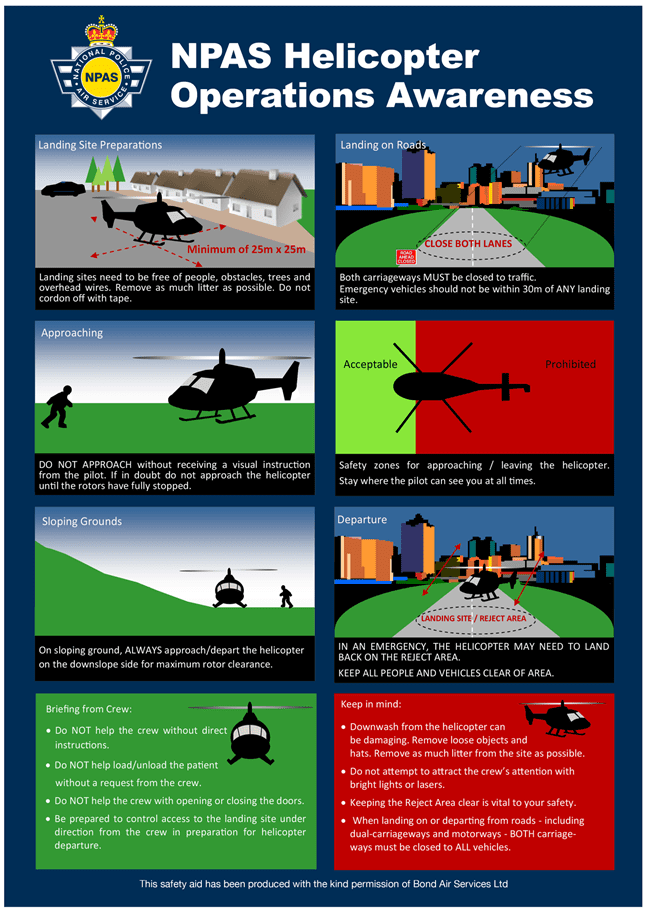If there is an incident involving a helicopter, most of the control measures for fixed-wing aircraft will apply. For example, isolation of aircraft engines should be handled in a similar way, but whereas fixed-wing aircraft have either propellers or jet engines, helicopters have main and tail rotors with similar hazards.
The control measures for the more specialist features of helicopters are included here. It may be necessary to seek specialist advice to determine what features the involved helicopter is fitted with.
Downwash
Personnel should exercise caution when working in an area where a helicopter may create rotor downwash. Any fire and rescue service equipment or vehicles that may be impacted by downwash should be removed from the area.
If personnel are assisting with the helicopter landing, they should remove potential debris from the landing area if possible.
Further information is shown in the National Police Air Service (NPAS) Helicopter Operations Awareness diagrams.
Suspended loads
Personnel should exercise caution when working in an area where a helicopter has been deployed to carry suspended loads, as they could be injured if the load is jettisoned or falls.
Static electricity
Personnel should exercise caution if approaching a helicopter with a suspended load, as static electricity may be discharged.
Water actuated devices
If the helicopter is fitted with a water actuated device, personnel should avoid applying water or foam to the aircraft as this may deploy the buoyancy bags or inflation packs.
Personnel should maintain an appropriate distance from the helicopter until it is confirmed that either:
- The helicopter does not have a water actuated device
- The water actuated device has already deployed
- The water activated device has been isolated and made safe
Automatically deployable emergency locator transmitters
If a helicopter is fitted with an automatically deployable emergency locator transmitter (ADELT), personnel should avoid applying water or foam to the aircraft as this may deploy the transmitter.
Personnel should maintain a distance of 10m from the helicopter until it is confirmed that either:
- The helicopter does not have an ADELT
- The ADELT has already deployed
- The ADELT has been isolated and made safe

